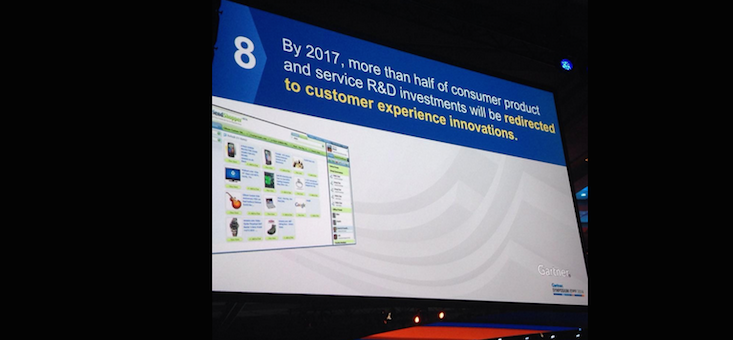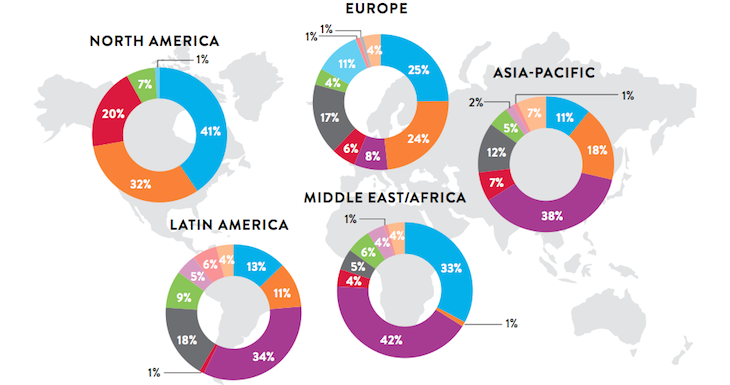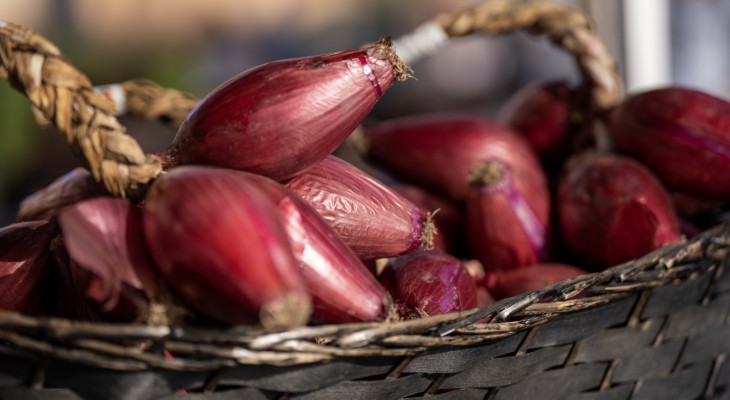“Channel hopping” is a well-established practice in the new multi-channel consumer, who easily goes from discount stores to supermarkets, from the farmers’ markets to online stores for his purchases, but with which rationale? Investigating the intricacies of the mind of this new anthropological species is the latest Nielsen retail and e-commerce “The Future of Grocery” survey, carried out on 30 thousand consumers in 60 countries. Which also it reveals that, while the large stores for now remain dominant, small stores (and it is no surprise: we see it also with our neighbourhood supermarkets) are the most dynamic. In terms of value, super and hypermarkets account for 51% of global sales. The survey highlights the regional differences, but the smaller stores, small supermarkets and traditional stores, have grown more in the last 12 months (4 to 6% compared to 2% for the larger stores). “Worldwide we are seeing the growth of neighbourhood retailing – said Patrick Dodd, President, Global Retailer Vertical, Nielsen – In the eyes of the global consumer, at the moment, small is beautiful”. The influence of e-commerce on the concept of proximity and convenience is evident, but the fact remains that the smaller stores are growing in all markets, developed or developing, and are mainly used for small urgent purchases or particular products.  It is therefore interesting to consider how the product category in fact influences the choice of channel for “physical” shopping. In mature markets, where 61% of sales in large stores are concentrated on personal hygiene products, 62% on food and beverages and 79% on household products, convenience stores have interesting market shares of approximately 20%. In all three categories, the highest growth was recorded in small stores, with a tendency to fragmentation. In the food sector, it is precisely traditional stores and kiosks that are meeting the needs of speed and convenience.
It is therefore interesting to consider how the product category in fact influences the choice of channel for “physical” shopping. In mature markets, where 61% of sales in large stores are concentrated on personal hygiene products, 62% on food and beverages and 79% on household products, convenience stores have interesting market shares of approximately 20%. In all three categories, the highest growth was recorded in small stores, with a tendency to fragmentation. In the food sector, it is precisely traditional stores and kiosks that are meeting the needs of speed and convenience.  Price above all, but also product quality influences “channel hopping”.
Price above all, but also product quality influences “channel hopping”.  “Large supermarkets and hypermarkets are important players in the global retail landscape, and will continue to be so in the future – said Dodd -. But smaller stores have an important share in certain categories and are growing in others. Distribution efforts should focus on a mix of both, understand where the consumer buys and for which categories, provide the necessary insight to develop more precise distribution strategies for each market”.
“Large supermarkets and hypermarkets are important players in the global retail landscape, and will continue to be so in the future – said Dodd -. But smaller stores have an important share in certain categories and are growing in others. Distribution efforts should focus on a mix of both, understand where the consumer buys and for which categories, provide the necessary insight to develop more precise distribution strategies for each market”.
Tag: Consumer
Nielsen: consumers are changing, smaller stores are becoming more popular
The 10 trends that will change e-commerce by 2020

There was also Steve Wozniak, co-founder of Apple, and Satya Nadella, CEO of Microsoft discussing e-commerce and e-economy at the Gartner Symposium/ITxpo, a series of meetings and seminars for IT managers, held this month in Orlando, Florida, in order to “understand, build and optimise the opportunities provided by digital technology and move from theory to practice”.
So what will shopping of the future be like? A true science fiction film, according to the Gartner forecasts, in which increasingly complicated algorithms take control of and decide our lives and (especially!) what to buy (carried out via smartphones and delivered with drones whistling over our heads), and with the store in the background that becomes place instilling emotions, a bit like a museum or art gallery.
Gartner, a consultancy company in the IT field, has issued its ten commandments, ten key trends that should regulate commerce in the future and that managers should certainly bear in mind. In the background, the focus, increasingly crucial for companies of the future, is to invest in people and customer experience.
1. By 2018, digital business will require 50% less staff for processes and 500% more experts in non-traditional roles such as integration specialists, digital business architects, regulatory analysts, risk professionals and lawyers.
2. By 2017, a successful digital business will be launched created by an algorithm.
3. By 2018, intelligent machines and industrialised services will lower the cost of commercial transactions by 30%.
4. By 2020, life expectancy in advanced economies will increase by six months due to the spread of wireless technology for health monitoring.
5. By 2016, e-commerce carried out exclusively via mobile devices and digital assistants will amount to 2.5 billion dollars. As a result, marketing campaigns will need not only to consider people but also to devise marketing techniques able to capture the attention of “digital personal shoppers”.
6. By 2017, in the USA “smartphone fever” will drive purchasing revenues via smartphone to 50% of e-commerce revenues. Companies will need to consider digital wallets (Apple Passbook, Google Wallet) in order to meet the growing consumer interest in commerce and payment via mobile phone.
7. By 2016, 70% of successful digital commerce models will be based on deliberately unstable processes. Company personnel will need to have increasingly greater flexibility and responsiveness to support organisational fluidity.
8. By 2017, more than half the investments in product and service research and development will be redirected to innovation of the customer experience. It will be increasingly important to know your customer through the identification of buyer personas and ethnographic analyses.
9. By 2017, almost 20% of e-commerce companies that sell consumer durable goods will use 3D printers to offer customised products.
10. By 2018, retailers using targeted messages together with Internal Positioning Systems (a kind of GPS able to exactly locate the customer in the store) will increase visits by 20%. Knowing the customer’s data will be essential in order to send targeted offers in real time, directly in front of the shelf.
Science fiction? Certainly not, the technology and its applications are already there, it’s just a matter of numbers. Just think of widely publicised innovations in the early stages only used by the niche of techno nerds, but then adopted by the many, all of a sudden: from the e-book to 3G on mobile phones. The future indeed is just around the corner.
Anna Muzio





